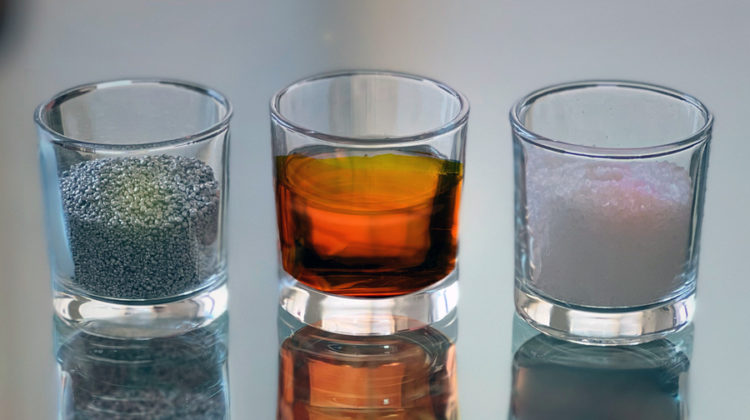
Researchers at MIT and elsewhere have developed a new kind of battery made from abundant and inexpensive materials. The new battery architecture uses aluminium and sulphur as its two electrode materials, with a molten salt electrolyte in between.
‘I wanted to invent something that was better, much better, than lithium-ion batteries for small-scale stationary storage, and ultimately for automotive [uses],’ said Professor Donald Sadoway, the John F Elliott Professor Emeritus of Materials Chemistry at MIT.
In addition to being expensive, lithium-ion batteries contain a flammable electrolyte, making them less than ideal for transportation. So, Sadoway started to study the periodic table, looking for cheap, Earth-abundant metals that might be able to substitute for lithium. Iron is the commercially dominant metal, but it doesn’t have the right electrochemical properties for an efficient battery; however, the second-most-abundant metal in the marketplace – and actually the most abundant metal on Earth – is aluminium. ‘So, I said, well, let’s just make that a bookend. It’s gonna be aluminium,’ Sadoway said.
Then came deciding what to pair the aluminium with for the other electrode, and what kind of electrolyte to put in between to carry ions back and forth during charging and discharging. The cheapest non-metal is sulphur, so that became the second electrode material. As for the electrolyte, ‘we were not going to use the volatile, flammable organic liquids’ that have sometimes led to dangerous fires in cars and other applications of lithium-ion batteries, Sadoway said.
The team tried some polymers but ended up looking at a variety of molten salts that have relatively low melting points – close to the boiling point of water, as opposed to about 500°C for many salts. ‘Once you get down to near body temperature, it becomes practical’ to make batteries that don’t require special insulation and anticorrosion measures, Sadoway said.
In their experiments, the team showed that the battery cells could endure hundreds of cycles at exceptionally high charging rates, with a projected cost per cell about one-sixth that of comparable lithium-ion cells. The charging rate was highly temperature-dependent, with 110°C showing 25 times faster rates than 25°C.
The molten salt electrolyte, chosen simply because of its low melting point, turned out to have a fortuitous advantage. One of the biggest problems in battery reliability is the formation of dendrites – narrow spikes of metal that build up on one electrode and eventually grow across to contact the other electrode, causing a short-circuit and hampering efficiency. The salt used in the new battery, it turns out, is very good at preventing that malfunction.
The chloro-aluminate salt ‘essentially retired these runaway dendrites, while also allowing for very rapid charging’, Sadoway said. ‘We did experiments at very high charging rates, charging in less than a minute, and we never lost cells due to dendrite shorting.’
The battery doesn’t require an external heat source to maintain its operating temperature. The heat is naturally produced electrochemically by charging and discharging the battery. ‘As you charge, you generate heat, and that keeps the salt from freezing. And then, when you discharge, it also generates heat,’ Sadoway said. In a typical installation used for load-levelling at a solar-generation facility, for example, ‘you’d store electricity when the sun is shining and then you’d draw electricity after dark, and you’d do this every day. And that charge-idle-discharge-idle is enough to generate enough heat to keep the thing at temperature.’
According to Sadoway, the new battery formulation would be ideal for installations of about the size needed to power a single home or small- to medium-sized business, producing on the order of a few tens of kilowatt-hours of storage capacity.
The smaller scale of the aluminium-sulphur batteries would also make them practical for uses such as electric vehicle charging stations, Sadoway said. Having a battery system such as this to store power and then release it quickly when needed could eliminate the need for installing expensive new power lines to serve these stations.
The new technology is already the basis for a new spinoff company called Avanti. ‘The first order of business for the company is to demonstrate that it works at scale,’ Sadoway said. It will then be subjected to a series of stress tests, including running through hundreds of charging cycles.



